
Uranium Enrichment
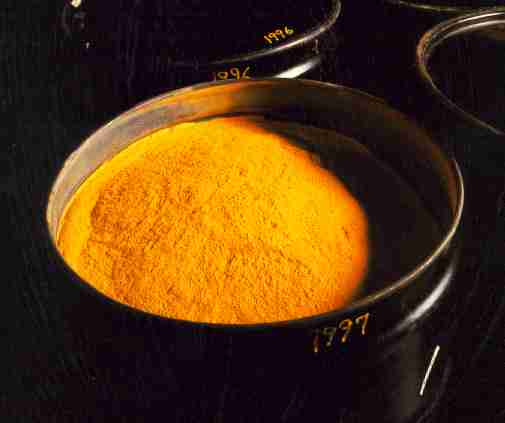
Source: Photo
courtesy of Cogema, Inc
When the uranium leaves the ISL facility or a uranium mill, it is in the form of uranium oxide (U3O8) or what is commonly called yellowcake. This uranium oxide is not the form of uranium that is used by nuclear reactors (UO2), therefore it has to be refined or enriched for civilian use.
The uranium for power plants is processed to enrich U-235 (about U Isotopes) with respect to the other isotopes of uranium. For reactor grade this is approximately 3-5% U-235. Weapons grade uranium has greater than 90% U-235, is the metallic form of uranium and is referred to as highly enriched uranium (HEU).
The enrichment process involves:
- converting the uranium oxide (solid) to uranium hexafluoride (UF6), a gas,
- the UF6 is then enriched with respect U-235 and converted to UO2, and
- this process creates depleted uranium (DU) which has more U-238 and enriched uranium which has more U-235 than natural uranium.
How is uranium enriched?
To separate the isotopes of uranium, you have to expend a lot of energy to create nuclear fuel. Because the two isotopes are almost the same size and weight, those slight differences have to be exploited in the separation process using similar techniques over and over, finally getting to the purest form. The two common production methods employ the use of diffusion or centrifuge methods. Other techniques exist (such as laser and aerodynamic processes), but they are still experimental.
Diffusion Methods
Gaseous diffusion forces uranium hexafluoride gas through a series of semi-permeable membranes. Each pass through a membrane separates the two isotopes from each other; it takes over a thousand passes to make commercial nuclear fuel (3-5% U-235). The lighter, smaller U-235 moves through the membrane easier than the larger heavier U-238. After the UF6 is enriched by the specified amount, then it condensed into a liquid and then solidified.
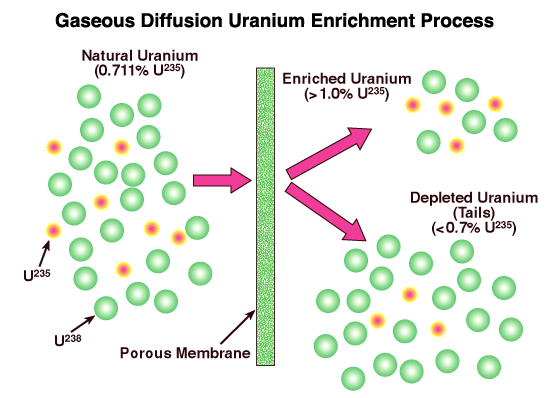
Gaseous diffusion produces approximately 1/3 of the reactor fuel, but this is old technology (it requires huge energy expenditures and needs lots of space) that is being replaced by newer, more cost effective technologies.
Centrifuge Methods
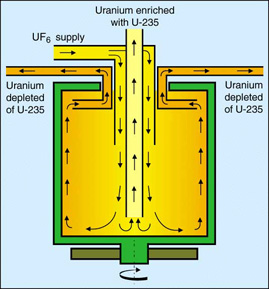
Source: European
Nuclear Society
Gas centrifuges uses centrifugal force (rapidly rotating cylinders) to separate the two isotopes from the UF6 gas. The heavier U-238 atom moves up and outward, and the lighter U-235 atom moves toward the center of the tube. Some companies apply a temperature profile across the centrifuges to help the process. Banks of centrifuges are used to enrich the uranium.
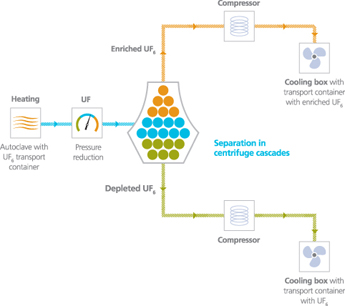
Source: Urenco
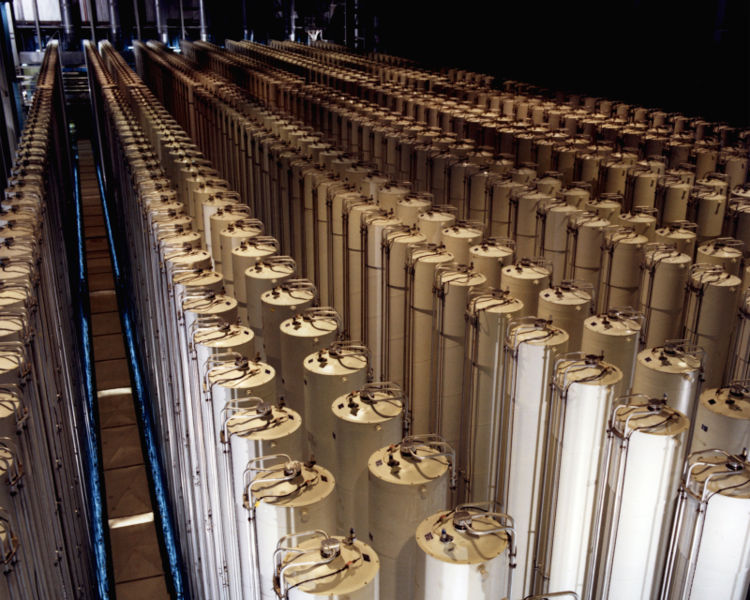
Source: DOE
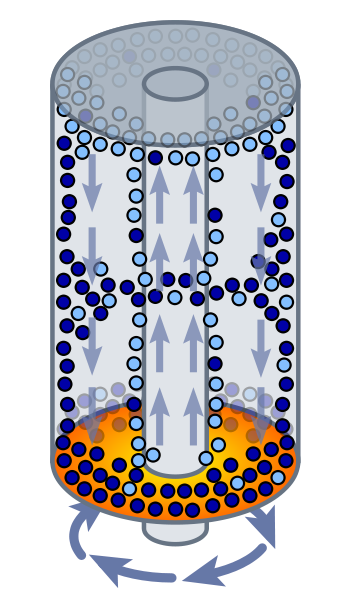
Source: Wikimedia
Commons
A new and improved type of centrifuge is gaining market use called a Zippe Centrifuge. The difference in the Zippe Centrifuge is that the U-235 that moves toward the center wall moves up and out and U-238 moves out and downward; therefore, they exit at opposite ends and produces a countercurrent.
Centrifuges produce over 50% of the enriched uranium today, and plants are still be constructed (e.g. the LES plant in Eunice, NM). Centrifuges are also much more energy efficient than gaseous diffusion plants.
Links to more information
- Wikipedia-Uranium Enrichment
- World Nuclear Association
- Louisiana Energy Services
- Areva
- LES-Urenco Co.
Any mention or link regarding a product, organization, company, or trade name is for information only and does not imply endorsement by the Bureau, NMT, or the State of New Mexico (see more).


